Letterboxing on Dartmoor: An Addictive Pastime... for the Brave!
by Jane Gilbert
It doesn't take long before visitors to Dartmoor get hooked on
its quirky weather, delicious delicacies and curious tales. From
barren rock-strewn tors to picturesque river valleys, and from
derelict Roman camps to welcoming country inns, Dartmoor has
something to offer every traveller brave enough to cross it. But
behind the mist, and the myths there is a growing army of
followers for a little-known and quintessentially Devonshire
hobby: letterboxing.
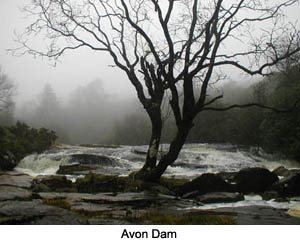 Letterboxing began in 1854, when Dartmoor guide
James Perrott left a glass bottle at the remote Cranmere pool. He
encouraged fellow walkers to leave a calling card in the bottle
as proof of their achievement. Soon a tin box replaced the
bottle, and a visitors book was provided. In 1937, local
newspaper The Western Morning News built a granite box at the
site. People began to copy the idea in other moorland spots, and
'letterboxing' took off. A map was produced showing the locations
of other boxes, and when they discovered them, hikers would leave
a card before replacing them in their hiding places. Letterboxing began in 1854, when Dartmoor guide
James Perrott left a glass bottle at the remote Cranmere pool. He
encouraged fellow walkers to leave a calling card in the bottle
as proof of their achievement. Soon a tin box replaced the
bottle, and a visitors book was provided. In 1937, local
newspaper The Western Morning News built a granite box at the
site. People began to copy the idea in other moorland spots, and
'letterboxing' took off. A map was produced showing the locations
of other boxes, and when they discovered them, hikers would leave
a card before replacing them in their hiding places.
Today there are over 3000 letterboxes on the moor. They are
hidden in the rocks at the top of tors, in nooks and crannies in
forests, and in inns and shops. Inside a typical box, there is a
rubber stamp and inkpad. You take an imprint of the stamp and
leave your own message in the visitors' book. There are
'travelling' boxes which are carried by intrepid walkers, and
'moving' boxes which change their position regularly and when
found should be moved to the next location that letterboxer
visits. But, due to fears of vandalism and the natural tongue in
cheek reticence of Devon folk, the whereabouts of these
letterboxes is a well guarded secret. Unless you are in the know,
of course. Or if you learn to ask the right questions.
The best way to get into Letterboxing is to talk to people you
see walking on the moor. If you are nice to them, they may give
you the necessary information to find your first letterbox. And
after you have collected 100 stamps, you can get a special ID
card which proves you are a serious letterboxer. There are even
rumours of a secret book, available only to initiates, with
clues on how to find them. You can even put your own letterbox on
the moor.
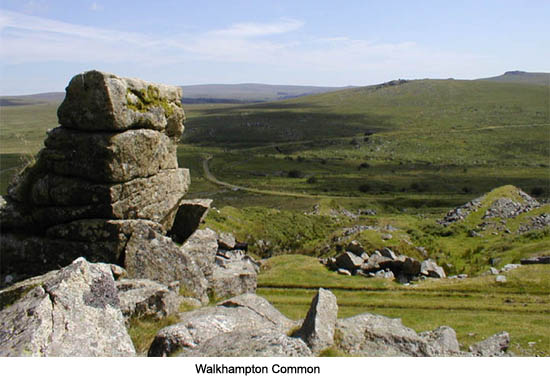
Whether or not you decide to become a serious letterboxer,
there are plenty of other things to entice you to linger around
Dartmoor. People have lived there since 4000 B.C. You can see
their legacy today, from industrial-age stone quarries to ancient
standing stones and Bronze Age burial sites.
Even an aimless meander on open moorland will often bring you to
a stone circle. These are the remains of bronze age houses. They
often have a larger enclosure beside them which was for animals.
You might find a cairn, which although it looks like just a pile
of stones, is in fact a burial site. Sometimes the bodies or
ashes were put in a stone chest which was sunk into the ground.
This was then covered with a mound of stones. Sometimes bodies
were placed within the pile of stones itself.
Everyone is familiar with Wiltshire's Stonehenge, but there are
many similar structures of equal mystery dotted around Dartmoor.
Imposing stone rows and triple circles may have been used for
religious, ceremonial or astrological purposes. No-one really
knows, but it's worth spending some time soaking up the
atmosphere of these ancient and magical places. All these
prehistoric sites are marked on the Ordnance Survey map of
Dartmoor. The Ordnance Survey's maps, which cover the whole of
the British Isles, show an invaluable amount of topographic and
cultural detail. They are cheap, readily available and a
worthwhile investment if you're thinking of exploring. A quick
check on the O.S. can make all the difference between being
stranded at dusk on an unexpected crag and reaching the warmth of
a well-hidden pub in time for dinner.
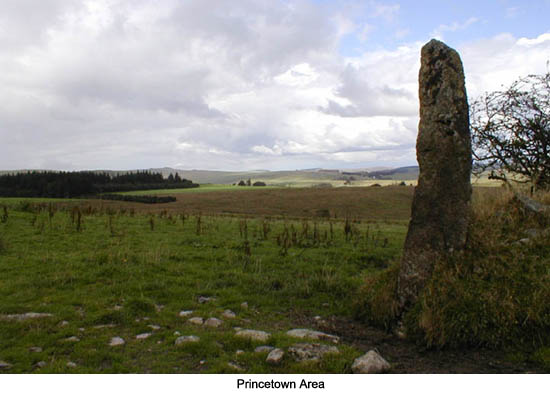
In Roman and medieval times, Dartmoor was an important centre
of commerce. From the 12th to the 19th centuries, tin was mined.
Many of the towns on the edge of the moor, like Tavistock and
Okehampton, are old stannary towns. Granite quarries provided
stone for building. Peat was cut and used for fuel. Networks of
channels, called leats, were dug and used to carry water to
industrial sites or houses. Today, china clay is quarried on the
southern edges of the moor. It is a strange bluey-grey substance,
used for such diverse things as building materials and
toothpaste. The big lorries trundling along, coated in a ghostly
grey dust, are a common sight for visitors.
Since the 19th Century, large swathes of moorland have been used
as military training grounds, and when there is firing practice
some parts are out of bounds to visitors. It is not unusual to
see bands of soldiers running about in their uniforms or
performing mysterious manoeuvres with maps and compasses. Indeed,
letterboxes used to be kept in old tin ammunition boxes. Now it
is more usual for them to be in ice cream containers, as the
letterbox authorities decided it was a bad idea to encourage
people, especially children, to pick up objects which could be
real military equipment.
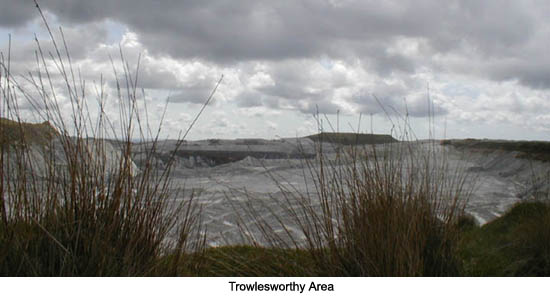
Dartmoor's isolated location, wealth of history, and the local
love for a good yarn, give it many stories of the supernatural to
tell. Even Sir Arthur Conan Doyle was caught up in its
atmosphere. After his visit, he decided to set the ghostly Hound
of The Baskervilles there. As you search for letterboxes, you are
sure to hear many other tales, told with delight and a certain
amount of eye twinkling.
There is a marked path across Dartmoor, leading from Okehampton
to Buckfastleigh, called the Bishop's Way. You will know when you
cross it, as it is marked by huge granite stone crosses. On this
route, near Sourton Common, there is a small granite-topped hill
called Branscombe's Loaf. In the late 13th century, the Bishop of
Exeter, Walter Branscombe, was travelling across his diocese of
Dartmoor, accompanied by his chaplain. He accidentally strayed
from the Bishop's Way and became lost in the mist which often
envelopes the moor with no warning and can disorientate even the
most seasoned traveller.
After they had been wandering around for a while, they became
hungry. Out of the mist emerged an old, cloaked, skeletal man,
who offered them bread and cheese. The Bishop was about to accept
this offer when his chaplain cried out. The old man had a cloven
foot: it was the Devil. The uneaten food fell to the ground and
turned into the rocks of Branscombe's Loaf. The old man vanished,
and the bishop and his chaplain went on their way unharmed. It
can certainly make you jump when strangers materialise out of
nowhere on Dartmoor. But today they are more likely to be wearing
anoraks than old cloaks.
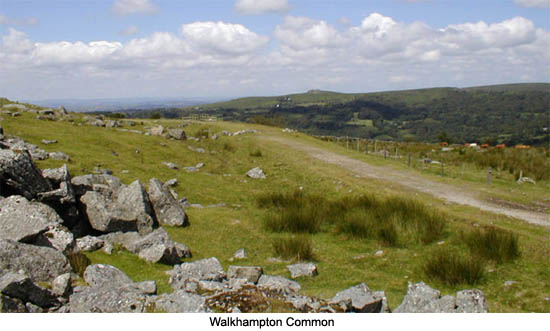
The story of the hairy hand is one of Dartmoor's most famous.
This tale is located on the B3212 road between Postbridge and Two
Bridges, both good spots to stop on a daytrip to Dartmoor. The
Two Bridges hotel offers a splendid cream tea for grockles (as
Devon people call tourists), whilst Postbridge, with its picture
postcard clapper-bridge is a good starting point for walks in the
high moor. It has an informative visitors' centre, and, for the
less energetic, it is the perfect place to linger by the river
for a picnic. But take care when driving between these two places
as the road is notorious for some peculiar goings-on.
In 1910, a series of strange incidents took place just outside
Postbridge. Carriages went out of control, cyclists felt their
handlebars wrenched out of their hands, and all victims ended up
in the ditch at the roadside. In the 1920s cars and motorbikes
experienced the same thing, and some people were even killed. An
army officer who was thrown off his motorbike survived to reveal
that a pair of large, muscular, hairy hands had grabbed him and
forced him off the road. The story led to front page headlines in
the national press. Investigators were sent to the site. The more
cynical among them concluded that the culprit was an adverse
camber. Others suggest it might be something to do with motorists
sampling the ales in the local inns before continuing their
journey. The Hairy Hands have not been spotted for some years
now, but you might want to keep a firm hold of your steering
wheel just the same.
Nearby, there is a not-to-be-missed pub called The Warren House
Inn. Situated in the high moor, with breathtaking views on a
clear day, it's a good place to start your letterboxing career,
whilst enjoying some local ale and a delicious Devon pasty.
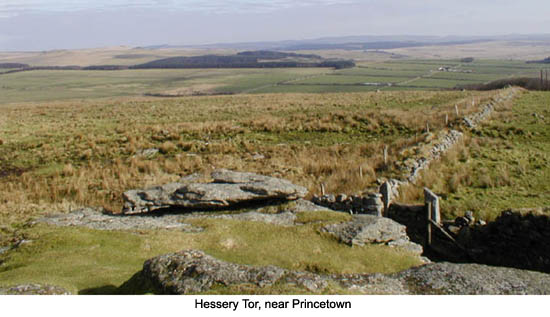
One harsh winter, a visitor arrived at Warren House wanting
overnight accommodation. In his room there was a large chest.
Wondering if there might be treasures within, he opened it.
Inside was a corpse with a white face. Thinking he had discovered
a murder victim, he ran downstairs where the landlord casually
remarked with typical Devon sang-froid, 'Don't worry! Tiz only
Faaather!' The landlord's father had died a few weeks earlier.
His body had been salted to preserve it until the weather
improved and he could be taken for burial at the parish church,
miles away across the moor.
There are few sites as sobering on Dartmoor as Dartmoor Prison,
especially if you are lucky enough to see it shrouded in mist.
This grim building was originally built for French prisoners
during the Napoleonic wars. Later, during the 1812 war, Americans
were held there. In 1850 it became a convict prison. With its
drizzle-grey walls, imposing barbed wire fences and the barren
land that surrounds it, it's easy to see why it's the perfect
place to incarcerate criminals.
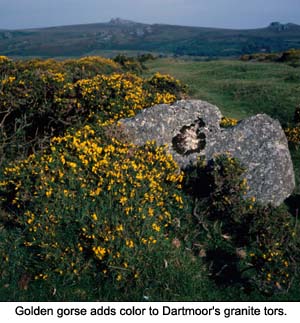 It's not an easy place to escape from. One
conman managed to convince the warden that he could be trusted to
work outside the prison. Instead, he slipped away from his
working party without being seen. However, once out on the moor
he lost his sense of direction, and as night fell he began to
despair. Suddenly, two soldiers marched out of the mist towards
him. He decided they must know where they were going, and he
decided to follow them. It's not an easy place to escape from. One
conman managed to convince the warden that he could be trusted to
work outside the prison. Instead, he slipped away from his
working party without being seen. However, once out on the moor
he lost his sense of direction, and as night fell he began to
despair. Suddenly, two soldiers marched out of the mist towards
him. He decided they must know where they were going, and he
decided to follow them.
They marched through the gloom, and straight into the lights of
the search party out looking for him. Then they disappeared. It
is believed that these two men were part of a group of soldiers
who were caught long ago in a blizzard on the moor and died. As
you pass the prison, you'd be forgiven for thinking prisoners
would be better off staying inside than taking their chances
escaping across the surrounding moorland.
If you are brave enough to walk the Bishop's Way, or to take on
the Hairy Hands in search of letterboxes, it's a great way to get
to know Dartmoor. And while you're there don't forget to try the
local ales, the traditional cider, the wonderful Devon pasty (not
to be confused with the Cornish imitation!) and the calorie-laden
Devon cream tea. With its wild beauty, temperamental weather and
wealth of folklore, many Dartmoor visitors get bitten by the
letterboxing bug. (They have started letterboxing clubs as far
afield as Yorkshire and Holland.) Just don't wander off the path
too much, and if you do, be sure to take a map. They are a lot
more reliable than waiting for a passing ghost to show you the
way.
More Information:
We regret that we no longer have the resources to maintain up-to-date links and/or hours and pricing details for the various sites and attractions listed on this website. For more information about the location(s) listed above, please use your favorite search engine or visit Wikipedia.
Writer, teacher and psychologist Jane Gilbert comes from Devon, England, and lives by the sea in Italy. After studying English Literature, she ran away to Brazil where she travelled extensively and cuddled sloths. She likes giraffes and curl reviver.
Article and photos © 2006 Jane Gilbert
"Gorse and granite" photo © 2006 Moira Allen
|
